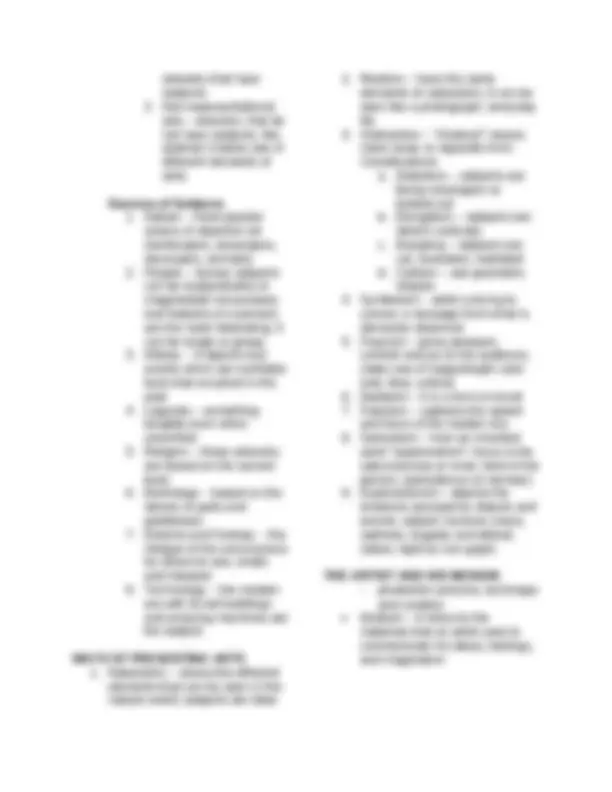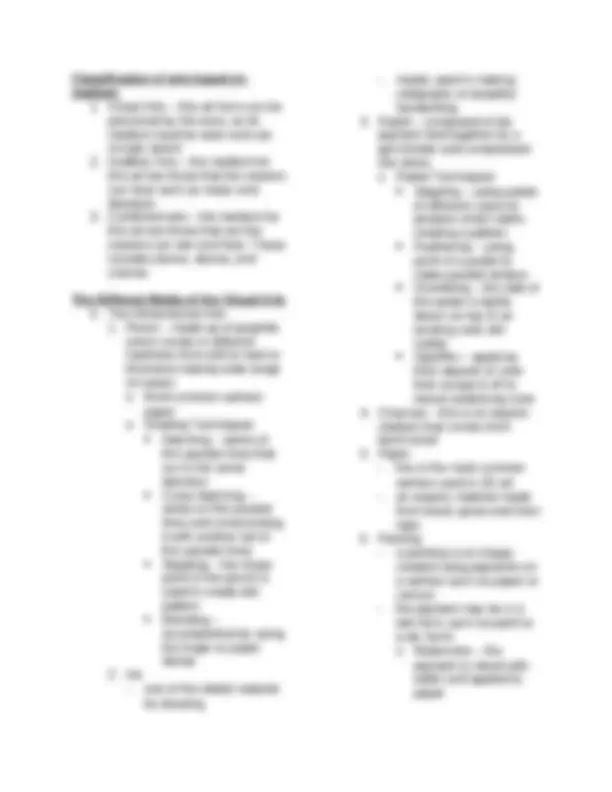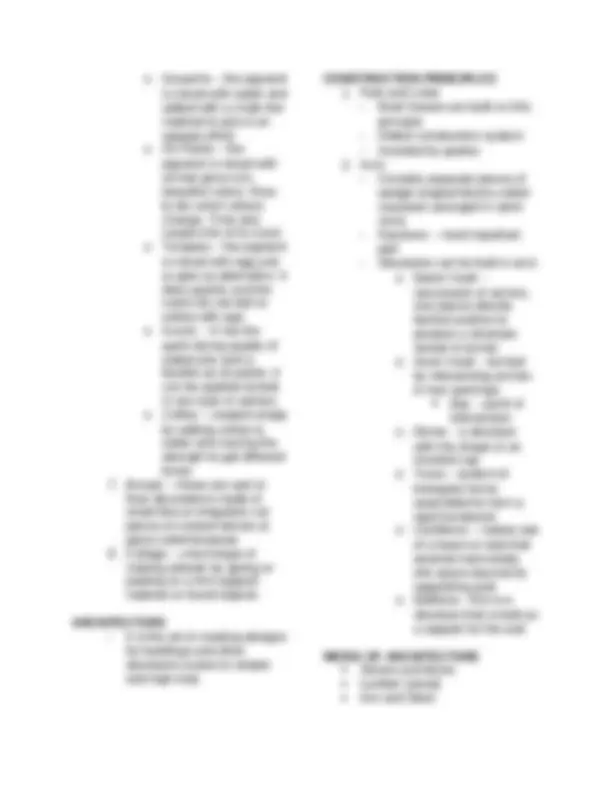





Study with the several resources on Docsity

Earn points by helping other students or get them with a premium plan


Prepare for your exams
Study with the several resources on Docsity

Earn points to download
Earn points by helping other students or get them with a premium plan
Community
Ask the community for help and clear up your study doubts
Discover the best universities in your country according to Docsity users
Free resources
Download our free guides on studying techniques, anxiety management strategies, and thesis advice from Docsity tutors
Notes about art appreciation and other medium of arts
Typology: Lecture notes
1 / 6

This page cannot be seen from the preview
Don't miss anything!




Artisans
- Person who is in a skilled trade that involves making things by hand - Also known as craftworker - His/her creations may be functional or decorative - Handmade products or skilled artisans are priced more than factory-made products ELEMENTS OF VISUAL ARTS Line – it is used to lead the viewer’s eye throughout the artwork. It has width and length o Five basic kinds of lines
Classification of arts based on medium
o Gouache – the pigment is mixed with water and added with a chalk-like material to give it an opaque effect o Oil Paints – the pigment is mixed with oil that gives rich, beautiful colors. Slow to dry which allows change. Time also causes the oil to crack o Tempera – the pigment is mixed with egg yolk or glue as alternative. It dries quickly and the colors do not dull or yellow with age o Acrylic – it has the quick drying quality of watercolor and is flexible as oil paints. It can be applied almost in any type of surface. o Coffee – created simply by adding coffee to water and varying the strength to get different tones